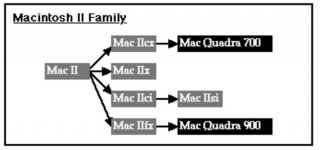beachycove
Well-known member
I just found a statement in another thread from Sept 4, 2019 (statement was by user IIfx), and rather than necro-thread it, I thought I would bring it up separately: "The Quadra 950 is ... solid like a rock; main difference between 950 and 800 architecture is how the 950 grew out of the IIfx system architecture and has the I/O co-processors and memory management architecture. The Quadra 800 is more conventional."
Is anyone able to comment on the claim here concerning the 950 as successor to the IIfx? I had not been aware of any connection, but if this statement is correct, my 950 just got more interesting.
Original thread: https://68kmla.org/forums/index.php?app=forums&module=forums&controller=topic&id=57863&page=2&tab=comments#comment-617894
Is anyone able to comment on the claim here concerning the 950 as successor to the IIfx? I had not been aware of any connection, but if this statement is correct, my 950 just got more interesting.
Original thread: https://68kmla.org/forums/index.php?app=forums&module=forums&controller=topic&id=57863&page=2&tab=comments#comment-617894
Last edited by a moderator:

